#futureoftransportation
Text

Neon arteries pulse through Neo Arcadia! My latest canvas takes you on a high-speed tour of humanity's future metropolis. Dive into a world where chrome skyscrapers pierce the holographic night sky and sleek maglev pods streak across luminous highways. ✨
**Can you imagine cruising this neon jungle in a self-driving hypercar? **
#scifiart #futuristic #cityscape #neonvibes #cyberpunk #conceptart #maglev #hypercar #futureoftransportation #artistsoninstagram #instagood #explorepage #digitalpainting #supportsmallbusiness
#scifiart#futuristic#cityscape#neonvibes#cyberpunk#conceptart#maglev#hypercar#futureoftransportation#artistsoninstagram#instagood#explorepage#digitalpainting#supportsmallbusiness
2 notes
·
View notes
Text
Audi PB18 e-tron: The Future of Electric Performance
The Audi PB18 e-tron concept car is a glimpse into the future of electric performance. With its radical design, advanced technology, and blistering acceleration, the PB18 e-tron is a sign of things to come.
Design
The Audi PB18 e-tron is a study in aerodynamic efficiency. Its sleek bodywork is almost entirely covered in smooth surfaces, with only a few vents and intakes to disrupt the airflow.…

View On WordPress
#allwheeldrive#AudiPB18e-tron#automotivetechnology#carbonfiber#ConceptCar#electricperformance#electricvehicle#futureofcars#futureoftransportation#futuristiccar#hypercar#minimalistdesign#performancecar#supercar
2 notes
·
View notes
Text
The Role And Impact Of Intelligent Transportation Systems
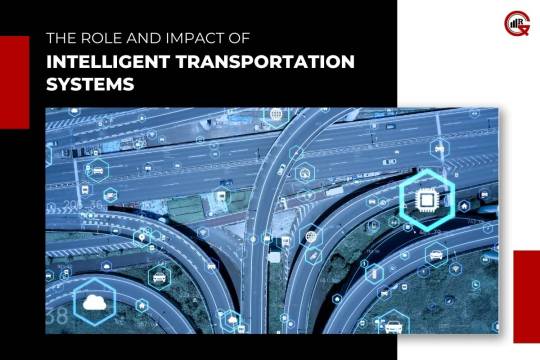
In today’s fast-paced world, transportation systems are evolving at a rapid pace, driven by technological advancements and the growing need for efficient, sustainable, and safe mobility solutions. Among the key innovations shaping the future of transportation is the development and implementation of Intelligent Transportation Systems (ITS). These sophisticated systems harness cutting-edge technologies to optimize traffic flow, enhance safety, reduce congestion, and improve overall transportation efficiency. In this article, we explore the concept, components, benefits, challenges, and prospects of Intelligent Transportation Systems.
Understanding Intelligent Transportation Systems
ITS encompasses a wide range of technologies, applications, and services designed to improve the efficiency, safety, and sustainability of transportation networks. ITS integrates advanced information and communication technologies with transportation infrastructure, vehicles, and travelers to enable smarter, more connected, and data-driven transportation solutions.
Components of Intelligent Transportation Systems
Traffic Management Systems: Traffic management systems use real-time data collection, analysis, and control strategies to monitor and manage traffic flow on roadways, highways, and urban streets. These systems may include traffic surveillance cameras, traffic signal control systems, dynamic message signs, and adaptive traffic signal control algorithms to optimize traffic flow and reduce congestion.
Vehicle-to-Infrastructure (V2I) Communication: Vehicle-to-Infrastructure communication enables vehicles to exchange data with roadside infrastructure, such as traffic signals, road signs, and toll booths, to receive real-time traffic information, navigation assistance, and safety warnings. V2I communication facilitates intelligent routing, collision avoidance, and emergency response coordination to enhance driver safety and efficiency.
Vehicle-to-Vehicle (V2V) Communication: Vehicle-to-Vehicle communication allows vehicles to communicate with each other to share information about their speed, position, and trajectory, enabling cooperative driving and collision avoidance maneuvers. V2V communication systems use wireless communication technologies, such as Dedicated Short-Range Communication (DSRC) or Cellular Vehicle-to-Everything (C-V2X), to enable real-time data exchange between vehicles.

Traveler Information Systems: Traveler information systems deliver real-time traffic updates, road conditions, and travel advisories to travelers through various channels, such as mobile apps, websites, variable message signs, and roadside information displays. These systems help travelers make informed decisions about their routes, modes of transportation, and travel schedules to avoid congestion and delays.
Benefits of Intelligent Transportation Systems
Improved Traffic Flow: Intelligent Transportation Systems help optimize traffic flow, reduce congestion, and minimize travel times by providing real-time traffic information, dynamic routing recommendations, and adaptive traffic signal control strategies.
Enhanced Safety: By facilitating vehicle-to-vehicle and vehicle-to-infrastructure communication, ITS systems enable proactive safety measures, collision avoidance maneuvers, and emergency response coordination to reduce the risk of accidents and improve overall road safety.
Environmental Sustainability: ITS contributes to environmental sustainability by reducing fuel consumption, vehicle emissions, and environmental pollution through more efficient traffic management, optimized vehicle routing, and reduced congestion.
Enhanced Mobility and Accessibility: ITS improves mobility and accessibility for all travelers, including motorists, cyclists, pedestrians, and public transportation users, by providing real-time travel information, accessible transportation options, and inclusive design features.
Cost Savings and Economic Benefits: By reducing travel times, fuel consumption, and vehicle operating costs, ITS systems generate cost savings for businesses, individuals, and governments while stimulating economic growth, productivity, and competitiveness in urban and regional economies.
Challenges and Considerations

Privacy and Security Concerns: ITS involves the collection, processing, and transmission of large volumes of data, raising concerns about privacy, cybersecurity, and data protection. Safeguarding sensitive information and ensuring secure communication networks are essential to maintain public trust and confidence in ITS systems.
Equity and Accessibility: Ensuring equitable access to Intelligent Transportation Systems for all travelers, including underserved communities, low-income individuals, and persons with disabilities, requires addressing barriers to adoption, affordability, and digital literacy while promoting inclusive design and user-friendly interfaces.
Regulatory and Legal Frameworks: The development and deployment of ITS require clear regulatory frameworks, standards, and guidelines to address legal and liability issues, data ownership rights, and compliance with privacy regulations and transportation laws.
Interagency Collaboration: Successful implementation of Intelligent Transportation Systems relies on collaboration and coordination among multiple stakeholders, including government agencies, transportation authorities, private sector partners, and technology providers, to align goals, share resources, and address interoperability challenges.
Future Trends and Innovations
Autonomous Vehicles: The advent of autonomous vehicles (AVs) promises to revolutionize transportation systems by integrating self-driving technologies with Intelligent Transportation Systems to enable safer, more efficient, and sustainable mobility solutions.
Connected Infrastructure: The deployment of connected infrastructure, such as smart intersections, sensor-equipped roadways, and dynamic lane markings, enhances the capabilities of ITS by providing real-time data insights, predictive analytics, and proactive traffic management strategies.
https://gqresearch.com/wp-content/uploads/2024/04/2.3-Mobility-as-a-Service-MaaS.jpg
Big Data Analytics: The use of big data analytics, artificial intelligence, and machine learning techniques enables ITS to analyze vast amounts of transportation data, identify patterns, and generate actionable insights to optimize traffic flow, predict demand, and improve decision-making.
Smart Cities Integration: ITS is increasingly integrated with broader smart city initiatives, such as smart energy grids, environmental monitoring systems, and digital infrastructure, to create holistic, interconnected urban ecosystems that enhance livability, sustainability, and resilience.
Conclusion: Shaping the Future of Transportation
In conclusion, Intelligent Transportation Systems represent a transformative approach to addressing the complex challenges facing modern transportation systems. By harnessing advanced technologies, data-driven strategies, and collaborative partnerships, ITS enables smarter, safer, and more efficient mobility solutions that enhance quality of life, promote economic prosperity, and protect the environment for current and future generations. As we continue to navigate the complexities of urbanization, population growth, and technological innovation, Intelligent Transportation Systems will play an increasingly critical role in shaping the future of transportation and shaping the way we move, connect, and thrive in an ever-changing world.
#intelligenttransportationsystems#smartmobility#futureoftransportation#trafficmanagement#connectedinfrastructure
0 notes
Text
Technology Behind Dune Movie
Technology Behind Dune Movie
https://www.youtube.com/watch?v=zkgFWjKxd8o
Technology Behind Dune Movie
Uncover the futuristic world of Dune Part 1 and the advanced technology that sets it apart from traditional sci-fi films. Delve into the captivating story concept that has captured the hearts of audiences for decades. Join us on a journey through the technological marvels of this 2021 remake by director Denis Villeneuve. Subscribe now for more behind-the-scenes looks at the tech in Dune!
Products:
===================================
=================================
🔔 Join Galore Techs to watch more content on innovative Ideas and Technology: https://www.youtube.com/@galoretechs
✅ Stay Connected With Us.
=============================
Time Stamps:
0:00 - Intro
1:04 - Budget
2:06 - Real World + CGI
2:43 - Mechanical Aircrafts
4:30 - Animation Softwares
6:00 - Creating the Sandworm
7:50 - Camera Tech 📸
=============================
👉Facebook: https://ift.tt/9e0ny4u
👉Instagram: https://ift.tt/GzlBcpd
👉Tiktok: https://ift.tt/WJzyQnI
✅ For Business Inquiries: [email protected]
=============================
✅ Music Credits:
Music from InAudio: https://inaudio.org/
Track Name:
CInematic Epic [Trailer Music] by MokkaMusic / Dune

• (No Copyright Music) C...
Music provided by "MokkaMusic" channel and https://inaudio.org
Track: Good Times - Ason ID [Audio Library Release]
Music provided by Audio Library Plus
Watch:
• • Good Times - Ason ID |...
Free Download / Stream: https://ift.tt/p0U68gk
✅ Recommended Playlists
👉Movies Tech Reviews:
https://www.youtube.com/playlist?list=PLIz67rSO6VqKMpli3v483CbwEY_PeFPmt
👉List of New Technologies:
https://www.youtube.com/playlist?list=PLIz67rSO6VqLiHMsSI028gKBiOtXgiF-C
✅ Other Videos You Might Be Interested In Watching:
👉The Future of Creativity: Understanding the Rise of Generative AI
https://www.youtube.com/watch?v=MbbJw8GWdjk
👉The Secrets Behind Creed III: Unveiling the Hidden Tech
https://www.youtube.com/watch?v=sY4rkDoE-oI
👉TOP 12 Emerging Tech Trends of 2023
https://www.youtube.com/watch?v=bSQlYg9TXxk
👉A Vivid Multidimensional Film: Is Across the Spider-Verse the FUTURE of Animated Movies?
https://www.youtube.com/watch?v=mcxdmahh3WQ
=============================
✅ About Galore Techs.
Galore Techs does its best to present you with new gadgets, tech ideas, and technological advancements to look out for in the upcoming future. This channel is meant to be educational and informative about how these new technologies will change the world as we know it.
“The Web as I envisaged it, we have not seen it yet. The future is still so much bigger than the past.” -Tim Berners-Lee, Inventor of the World Wide Web.
Are you curious about science and technology? Want to learn more about the technology of the past, present, and future? Subscribe to our channel.
For Collaboration and Business inquiries, please use the contact information below:
📩 Email: [email protected]
🔔Subscribe for more videos on new gadgets, tech ideas, and technological advancements: https://www.youtube.com/@galoretechs
=================================
#GaloreTechs #Technology #Innovation #dune #dune2 #moviereviews #mindblowingtech #futuristicinnovations #emergingtech #aiadvancements
#techideas
Disclaimer: We do not accept any liability for any loss or damage incurred from you acting or not acting as a result of watching any of our publications. You acknowledge that you use the information we provide at your own risk. Do your own research.
Copyright Notice: This video and our YouTube channel contain dialog, music, and images that are the property of Galore Techs. You are authorized to share the video link and channel and embed this video in your website or others as long as a link back to our Youtube Channel is provided.
© Galore Techs
via Galore Techs https://www.youtube.com/channel/UCTyjV2lcEUMfTz4lxuB1ukg
March 23, 2024 at 09:16PM
#Science#Technology#Innovation#sing2#futureoftransportation#incrediblevehicles#futuristictransportation#selfdrivingtech#nextgenmobility#Galore Techs
0 notes
Text
Revolutionizing Global Logistics in 2024
Originally Published on: SpendEdge |Emerging Supply Chain and Transportation Trends for the Future
In the ever-evolving landscape of global commerce, the synergy between supply chain and transportation takes center stage, facilitating seamless goods movement. As we step into 2024, a convergence of trends reshapes the industry, driven by technological advancements, sustainability imperatives, and the need for resilience amid unforeseen disruptions.
1. Digitalization and Automation: The thrust behind digitizing supply chain processes gains unprecedented momentum in 2024. Embracing cutting-edge technologies like AI, machine learning, and IoT, businesses optimize operations. Automation, from smart warehouses to autonomous vehicles, promises cost savings, heightened efficiency, and minimized errors.
2. Eco-Friendly Logistics: Sustainability becomes a focal point, propelling the adoption of electric vehicles, eco-friendly packaging, and energy-efficient warehouse operations. In alignment with consumer expectations and regulatory standards, companies strive to reduce carbon footprints.
Elevate your supply chain with SpendEdge. Request a free proposal now.
3. Resilience and Risk Management: Learnings from recent global events underscore the paramount importance of resilient supply chains. In 2024, companies diversify supplier bases, embrace local sourcing, and implement robust risk management strategies for agility amid challenges.
4. Last-Mile Innovations: Addressing the perennial bottleneck, expect game-changing innovations like drone deliveries, autonomous vehicles, and smart routing algorithms to streamline the last mile. These advancements reduce delivery times, costs, and enhance overall customer satisfaction.
5. Data Security and Cybersecurity: With increased digitization, the emphasis on data security reaches new heights. Companies prioritize robust cybersecurity measures, including encryption, secure cloud storage, and regular audits to safeguard sensitive information.
In Conclusion: 2024 heralds a transformative era for the supply chain and transportation industry. Focused on digitalization, sustainability, and resilience, businesses can navigate challenges and capitalize on opportunities. Embracing cutting-edge technologies paves the way for a more efficient, transparent, and sustainable future for global supply chains.
Contact us.
#GlobalLogisticsRevolution#TechInnovation2024#SustainableSupplyChains#ResilientLogistics#FutureOfTransportation
0 notes
Text
Navigating the Future: A Deep Dive into Smart Transportation Technologies
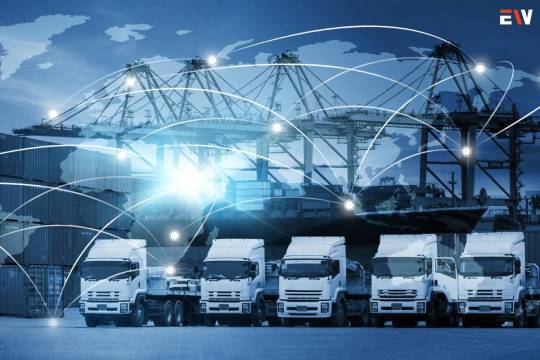
The landscape of transportation is undergoing a transformative shift towards greater efficiency, sustainability, and connectivity. Smart Transportation, an umbrella term encompassing a myriad of innovative technologies, is at the forefront of this evolution. This comprehensive guide explores the key components of smart transportation, its impact on urban mobility, benefits, challenges, and the future trends that promise to reshape the way we move.
Understanding Smart Transportation
Definition and Scope
Smart Transportation refers to the integration of advanced technologies to enhance the efficiency, safety, and sustainability of transportation systems. This holistic approach involves the application of digital solutions, data analytics, and communication technologies to optimize various aspects of transportation, from traffic management to vehicle connectivity.
Key Components
1. Intelligent Transportation Systems (ITS)
ITS involves the use of advanced technologies to manage and optimize traffic flow, enhance road safety, and improve overall transportation efficiency. Components of ITS include traffic monitoring, adaptive traffic signal control, and real-time information dissemination.
2. Connected Vehicles
Transportation relies on the connectivity of vehicles to each other and to infrastructure, creating an intelligent network. This connectivity enables real-time communication, enhancing safety, and facilitating the smooth flow of traffic.
3. Autonomous Vehicles
The advent of autonomous or self-driving vehicles is a prominent facet of transportation. These vehicles leverage artificial intelligence, sensors, and machine learning to navigate and operate without human intervention, potentially reducing accidents and improving traffic flow.
4. Smart Infrastructure
Infrastructure equipped with sensors and communication technologies forms a crucial component of smart transport. Smart traffic lights, road sensors, and integrated transportation hubs contribute to a more connected and responsive transportation ecosystem.
Impact on Urban Mobility
1. Traffic Management and Optimization
Smart Transportation technologies enable real-time monitoring of traffic patterns, congestion levels, and road conditions. This data is utilized to optimize traffic signals, reroute vehicles, and alleviate congestion, leading to more efficient transportation systems in urban areas.
2. Enhanced Safety
Connected vehicle technologies and autonomous driving systems have the potential to significantly enhance road safety. These technologies can detect and respond to potential hazards faster than human drivers, reducing the incidence of accidents and improving overall road safety.
3. Sustainable Transportation
Smart Transportation plays a pivotal role in promoting sustainability by optimizing routes, reducing traffic congestion, and encouraging the use of environmentally friendly modes of transportation. This contributes to a reduction in greenhouse gas emissions and a more sustainable urban environment.
Benefits of Smart Transport
1. Improved Efficiency
The integration of smart technologies streamlines transportation operations, resulting in more efficient traffic flow, reduced travel times, and enhanced overall system performance. This efficiency translates to time and cost savings for commuters and businesses.
2. Environmental Sustainability
By promoting sustainable modes of transportation and optimizing traffic flow, smart transportation contributes to environmental sustainability. Reduced congestion and improved fuel efficiency result in lower emissions, mitigating the environmental impact of urban transportation.
3. Enhanced Safety and Reduced Accidents
Connected vehicles and autonomous technologies have the potential to significantly reduce the number of traffic accidents. Real-time communication between vehicles and infrastructure helps prevent collisions and autonomous vehicles are designed to adhere strictly to traffic rules, minimizing human error.
4. Improved Accessibility
Smart Transportation technologies can enhance accessibility for individuals with mobility challenges. Real-time information about public transportation schedules, adaptive traffic signals, and connected vehicles contribute to creating a more inclusive transportation environment.
Challenges and Considerations
1. Infrastructure Development
The successful implementation of smart transport relies on robust and well-integrated infrastructure. The need for significant investments in sensor-equipped roads, communication networks, and smart traffic management systems poses a challenge, particularly for cities with outdated infrastructure.
2. Data Privacy and Security
The vast amount of data generated by smart transportation systems raises concerns about data privacy and security. Protecting sensitive information from cyber threats and ensuring that user data is handled responsibly are critical considerations in the development and deployment of smart transport technologies.
3. Regulatory and Legal Frameworks
The introduction of autonomous vehicles and other smart transportation technologies requires the development of comprehensive regulatory frameworks. Issues related to liability, insurance, and compliance with existing traffic laws must be addressed to ensure the safe integration of these technologies into existing transportation systems.
Future Trends
1. Integration of 5G Technology

The widespread deployment of 5G technology is poised to revolutionize smart transportation by providing faster and more reliable communication networks. This will enable real-time data exchange, supporting the seamless operation of connected and autonomous vehicles.
2. Mobility as a Service (MaaS)
The concept of Mobility as a Service envisions a shift from individual vehicle ownership to a model where transportation is viewed as a service. Integrating various modes of transportation, including public transit, ride-sharing, and micro-mobility, under a unified platform aims to provide users with convenient and flexible mobility solutions.
3. Continued Advancements in Autonomous Vehicles
Autonomous vehicle technology will continue to evolve, with ongoing research and development aimed at enhancing safety, reliability, and the overall performance of self-driving vehicles. As these technologies mature, their integration into mainstream transportation is expected to accelerate.
Conclusion
Smart Transportation represents a paradigm shift in the way we conceive, plan, and implement transportation systems. From optimizing traffic flow to enhancing safety and sustainability, the integration of smart technologies holds the promise of creating more efficient, accessible, and interconnected urban mobility networks. While challenges such as infrastructure development and regulatory frameworks persist, ongoing advancements and collaborative efforts across industries and governments indicate a future where smart transport technologies play a central role in shaping the way we move within and between cities.
Read More: Harnessing Innovation: The Role of Green Technology in Sustainable Development
#SmartTransportation#FutureOfTransportation#urbanmobility#connected#autonomousvehicles#SmartCities#transportation#technology#SustainableTransportation
0 notes
Text
Robo Taxi Market 2024-2030 is Thriving Worldwide with Key Players

The qualitative report published by Exactitude Consultancy research on the “Robo Taxi Market offers an in-depth examination of the current trends, latest expansions, conditions, market size, various drivers, limitations, and key players along with their profile details. The Robo Taxi market report offers the historical data for 2018 to 2023 and also makes available the forecast data from the year 2024 to 2030 which is based on revenue. With the help of all this information research report helps the Market contributors to expand their market positions. With the benefit of all these explanations, this market research report recommends a business strategy for present market participants to strengthen their role in the market. This report analyzes the impact of the Covid 19 pandemic on the Robo Taxi Market from a Global and Regional perspective.
The global Robo Taxi Market Size is expected to grow at 62.8% CAGR from 2024 to 2030. It is expected to reach above USD 24.3 billion by 2030 from USD 12.4 Billion in 2023.
For The Full Report Click here:
https://exactitudeconsultancy.com/reports/2811/robo-taxi-market/
#RoboTaxi#AutonomousTaxi#SelfDrivingTaxi#RoboticTaxi#TaxiAutomation#UrbanMobility#FutureOfTransportation#SharedMobility#MobilityAsAService#AutonomousVehicles#SmartCities#RideHailing#AIinTransportation#ElectricVehicles#InnovationInMobility#UrbanTransport#DriverlessTaxi#RoboticTransportation#AutonomousMobility#RoboTaxiService
0 notes
Text
youtube
#youtube#afwerx#autonomyprime#xwing#autonomousflight#groundbreaking#flightdemo#technology#innovation#aviation#drones#futuretech#autonomousvehicles#engineering#aerospace#robotics#unmanned#cuttingedge#futureoftransportation#unmannedflight#aviationindustry
0 notes
Link
#AI#AIAdvancements#AIEthics#AIImpact#ArtificialIntelligence#AutomotiveAI#FutureofTransportation#PersonalTransportation#SmartMobility#TechInnovation
0 notes
Text
Fly hyper scooter dragonfly
#tiktokdiscoveries#amazonfinds#tiktoktrends#hiddengems#amazondeals#mustwatch#dragonflyhyperscooter#electricscooter#ecofriendlytransportation#urbanmobility#funwaytogetaround#citylife#commuting#adventure#style#futureoftransportation
0 notes
Photo
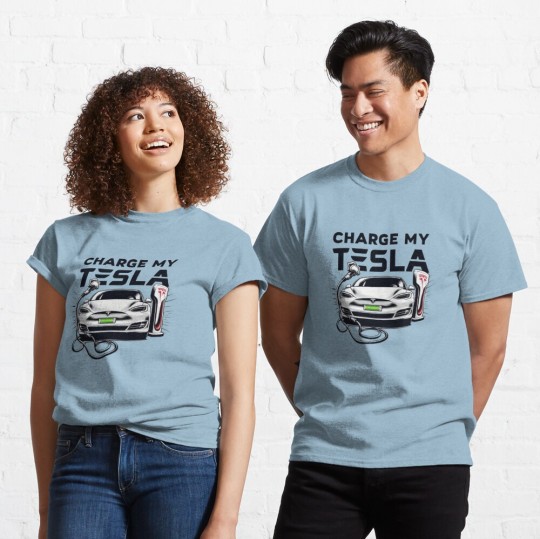


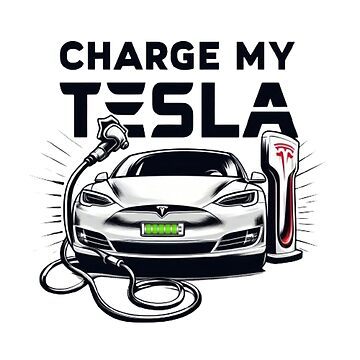

(via "Energize the Future: Charge My Tesla!" Long T-Shirt for Sale by Kadmon78)
#findyourthing#redbubble#ChargeMyTesla#cleanenergydrive#sustainablemobility#teslainnovation#ecofriendlydriving#ElectricVehicleStyle#drivewithpurpose#cleanenergyrevolution#futureoftransportation
0 notes
Text
#InfinityHarbour#MumbaiCommute#ElectricWaterTaxis#SustainableTravel#CityInnovation#FutureOfTransportation#NavigatingChange#GreenCommute#UrbanMobility#ExploreInfinityHarbour
0 notes
Text

What is the Future Scope of Hydrogen Vehicles?
The usage of hydrogen vehicles as a means of cutting greenhouse gas emissions and switching to greener transportation systems is becoming more and more popular.
Hydrogen Vehicles Future Scope
Hydrogen vehicles, or hydrogen fuel cell vehicles, have a lot of exciting prospects in store for the future.
Download - https://www.marketsandmarkets.com/industry-practice/RequestForm.asp
The following significant factors point to a promising future for hydrogen-powered vehicles:
Zero-Emission Transportation:
The transition to zero-emission transportation is possible using hydroplanes. Hydrogen vehicles have the potential to significantly contribute to the decarbonization of the transportation sector as efforts are made to mitigate climate change and reduce greenhouse gas emissions.
Vehicles powered by hydrogen have no tailpipe emissions, in contrast to those powered by traditional internal combustion engines. Since water vapor is the only consequence of hydrogen fuel cell technology, these devices are environmentally benign and help to improve air quality.
Long Driving Ranges and Quick Refueling:
compared to battery electric cars (BEVs), hydrogen vehicles have extensive driving ranges that are equivalent to those of conventional automobiles, hence reducing range anxiety. Applications like heavy-duty transportation, long-distance travel, and public transportation benefit greatly from this.
The time required to refuel a hydrogen car is comparable to that of a gasoline or diesel vehicle. Filling up a hydrogen tank usually just takes a few minutes, providing drivers with a familiar and simple refueling experience.
Energy Storage and Grid Balancing:
Vehicles powered by hydrogen may be used as energy storage devices. In times when renewable energy is generated in excess, hydrogen can be created by electrolysis and kept in the car's tank. The fuel cell may then use the stored hydrogen to turn it back into electricity, giving rise to a power source that can be used to satisfy peak demand for electricity or supplied back into the grid.
The intermittent nature of renewable energy sources can be counterbalanced by hydrogen vehicles' energy storage capacity, which also helps create a more resilient and stable energy grid.
Diversification of Energy Sources:
The transportation industry can diversify its energy sources thanks to hydrogen-powered vehicles. Numerous feedstocks, including renewable energy sources like solar, wind, and hydroelectric power, can be used to create hydrogen. The ability to produce hydrogen with flexibility makes the energy system more robust and sustainable.
By using hydrogen as fuel, the transportation industry may lessen its dependency on fossil fuels, improving energy security and lowering the environmental effects of extracting and burning conventional fuels.
Continued Technological Advancements:
Research and development in hydrogen fuel cell technologies are continuing. The efficiency, robustness, and affordability of fuel cell systems are being worked on in order to increase the competitiveness of hydrogen vehicles in the market.
Fuel cell systems and hydrogen infrastructure should become less expensive as economies of scale are realized and the technology advances, allowing people to purchase hydrogen vehicles at a lower cost.
Government Support and Policies:
Through funding, incentives, and legislation, numerous governments worldwide are actively promoting the development and use of hydrogen-powered cars. These programs are intended to promote the installation of hydrogen infrastructure, like as refueling stations, and hasten the expansion of the hydrogen economy.
To encourage the use of hydrogen vehicles, the development of infrastructure, and research and development activities, for instance, nations like China, Japan, Germany, South Korea, and South Korea have put in place bold plans and financial support.
Industry Collaboration and Investment:
Development and infrastructure for hydrogen vehicles are being funded by major automakers, energy corporations, and technology providers. Together, these parties are promoting innovation, advancing technology, and increasing the number of hydrogen-powered vehicles on the road.
To promote the expansion of hydrogen-powered vehicles, manufacturers and developers of hydrogen infrastructure are collaborating to build a strong network of hydrogen refueling stations. One example of this is the partnership between Toyota and Air Liquide.
With the convergence and advancement of these components, the potential applications of hydrogen cars appear bright. In the upcoming years, hydrogen vehicles are anticipated to play a major role in attaining sustainable, zero-emission transportation and lowering carbon emissions with sustained support, technological improvements, infrastructure development, and stakeholder participation.
Read More- https://www.marketsandmarkets.com/industry-practice/hydrogen/hydrogen-vehicles
#HydrogenVehicles#GreenTransport#CleanEnergy#ZeroEmissions#FuelCellCars#SustainableTransport#FutureOfTransportation#HydrogenFuel#RenewableEnergy#EcoFriendlyCars#H2Vehicles
0 notes
Text
Toyota ev Batteries - Introducing The Best Next Generation Solid-state batteries
Toyota ev Batteries – Introducing The Best Next Generation Solid-state batteries
Toyota has been working on solid-state batteries for many years, and it is now reportedly close to a breakthrough. Solid-state batteries are next-generation batteries that offer a number of advantages over traditional lithium-ion batteries, including:
Higher energy density: Solid-state batteries can store more…
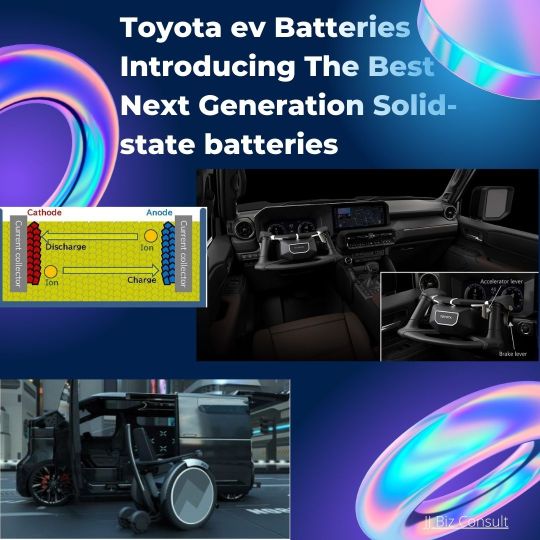
View On WordPress
#AutomotiveAdvancements#AutomotiveBreakthrough#AutomotiveRevolution#BatteryTechnology#ChargingEfficiency#cleanenergy#Decarbonization#EcoFriendlyVehicles#ElectricVehicles#EnergyStorage#EnvironmentalImpact#EVIndustryTrends#FutureOfTransportation#GameChanger#GreenInnovation#GreenTechnology#SolidStateBatteries#SustainableMobility#sustainabletransportation#ToyotaInnovation
0 notes
Text
Technology Behind The Makings of "Wonka"
Technology Behind The Makings of "Wonka"
https://www.youtube.com/watch?v=2DFYceDC1HU
Technology Behind The Makings of "Wonka"
Step into the magical world of "Wonka" and witness Timothée Chalamet's portrayal of the iconic chocolatier's early years. Explore the technology that brought this fantastical story to life on the big screen in 2023. Subscribe now to stay updated on the fascinating behind-the-scenes of your favorite movies!
Products:
===================================
=================================
🔔 Join Galore Techs to watch more content on innovative Ideas and Technology: https://www.youtube.com/@galoretechs
✅ Stay Connected With Us.
=============================
Time Stamps:
0:00 - Intro
0:50 - Revenue
1:30 - VFX (Visual Effects)
2:40 - Avid Media Composer
4:00 - Oompa Loompa
5:08 - Performance & Reactions
5:47 - Choreographic Visuals
7:00 - Camera 📸 Tech
=============================
👉Facebook: https://ift.tt/RDUml6c
👉Instagram: https://ift.tt/428VkD1
👉Tiktok: https://ift.tt/xZpiWRE
✅ For Business Inquiries: [email protected]
=============================
✅ Music Credits:
Music from InAudio: https://inaudio.org/
Track Name: Stylish Technology Beat [Technology Music] by MokkaMusic / Chrome
• (No Copyright Music) S...
Music provided by "MokkaMusic" channel and https://inaudio.org
Track: Good Times - Ason ID [Audio Library Release]
Music provided by Audio Library Plus
Watch:
• • Good Times - Ason ID |...
Free Download / Stream: https://ift.tt/vuLVJ4n
✅ Recommended Playlists
👉Movies Tech Reviews:
https://www.youtube.com/playlist?list=PLIz67rSO6VqKMpli3v483CbwEY_PeFPmt
👉List of New Technologies:
https://www.youtube.com/playlist?list=PLIz67rSO6VqLiHMsSI028gKBiOtXgiF-C
✅ Other Videos You Might Be Interested In Watching:
👉The Future of Creativity: Understanding the Rise of Generative AI
https://www.youtube.com/watch?v=MbbJw8GWdjk
👉The Secrets Behind Creed III: Unveiling the Hidden Tech
https://www.youtube.com/watch?v=sY4rkDoE-oI
👉TOP 12 Emerging Tech Trends of 2023
https://www.youtube.com/watch?v=bSQlYg9TXxk
👉A Vivid Multidimensional Film: Is Across the Spider-Verse the FUTURE of Animated Movies?
https://www.youtube.com/watch?v=mcxdmahh3WQ
=============================
✅ About Galore Techs.
Galore Techs does its best to present you with new gadgets, tech ideas, and technological advancements to look out for in the upcoming future. This channel is meant to be educational and informative about how these new technologies will change the world as we know it.
“The Web as I envisaged it, we have not seen it yet. The future is still so much bigger than the past.” -Tim Berners-Lee, Inventor of the World Wide Web.
Are you curious about science and technology? Want to learn more about the technology of the past, present, and future? Subscribe to our channel.
For Collaboration and Business inquiries, please use the contact information below:
📩 Email: [email protected]
🔔Subscribe for more videos on new gadgets, tech ideas, and technological advancements: https://www.youtube.com/@galoretechs
=================================
#GaloreTechs #Technology #Innovation #wonka #wonkamovie #innovativegadgets #mindblowingtech #futuristicinnovations #emergingtech #aiadvancements
#techideas
Disclaimer: We do not accept any liability for any loss or damage incurred from you acting or not acting as a result of watching any of our publications. You acknowledge that you use the information we provide at your own risk. Do your own research.
Copyright Notice: This video and our YouTube channel contain dialog, music, and images that are the property of Galore Techs. You are authorized to share the video link and channel and embed this video in your website or others as long as a link back to our Youtube Channel is provided.
© Galore Techs
via Galore Techs https://www.youtube.com/channel/UCTyjV2lcEUMfTz4lxuB1ukg
March 03, 2024 at 01:35AM
#Science#Technology#Innovation#sing2#futureoftransportation#incrediblevehicles#futuristictransportation#selfdrivingtech#nextgenmobility#Galore Techs
0 notes
Text
On the Move: The Revolution of Bikes with Front Cargo

In the world of cycling, innovation is the key to making two-wheeled transportation more practical and versatile. The emergence of bikes with front cargo, often referred to as cargo bikes, has transformed the way we think about urban commuting, family outings, and even small-scale logistics. In this blog, we’ll explore the exciting world of bikes with front cargo, their remarkable features, and the many ways they’re changing the way we travel and transport goods.
What Are Bikes with Front Cargo?
Bikes with front cargo are a special breed of bicycles designed to carry more than just the rider. Unlike traditional bicycles, cargo bikes are equipped with a sturdy front cargo area, often mounted above the front wheel. This front cargo space can be used to carry a variety of items, from groceries and luggage to children and pets.
Key Features of Bikes with Front Cargo:
Front Cargo Rack: The most distinguishing feature is the front cargo rack, which can vary in design from a flat platform to a spacious box.
Long Wheelbase: Cargo bikes typically have a longer wheelbase to accommodate the front cargo space.
Sturdy Frame: To handle the extra weight, cargo bikes are built with robust frames and reinforced components.
Electric Assistance: Some cargo bikes come with electric pedal assistance to make carrying heavier loads easier.
Types of Cargo Bikes

Longtail Bikes: These have a longer rear section for carrying cargo, and some can also accommodate a front rack.
Bakfiets: A traditional Dutch-style cargo bike with a spacious box in the front for children, groceries, or other cargo.
Tricycles: Cargo tricycles have three wheels for extra stability and can carry substantial loads.
Electric Cargo Bikes: Many cargo bikes are electric, providing motorized assistance for easier riding, especially when carrying heavy cargo.
Practical Uses of Bikes with Front Cargo
Cargo bikes are incredibly versatile and can be used in various practical ways:
Grocery Shopping: Transporting groceries is a breeze with a cargo bike. The front cargo area can carry bags, crates, and more.
Family Adventures: Cargo bikes are perfect for family outings. They can safely carry children, allowing for quality time spent outdoors.
Commuting: For urban commuters, cargo bikes offer a green and efficient alternative to cars. They can carry work essentials, gym bags, and more.
Business Deliveries: Cargo bikes are increasingly used for local deliveries, reducing the need for larger vehicles and minimizing traffic congestion.
Pet Transport: Four-legged friends can enjoy the ride in cargo bikes, whether it’s a trip to the park or a visit to the vet.
Benefits of Bikes with Front Cargo
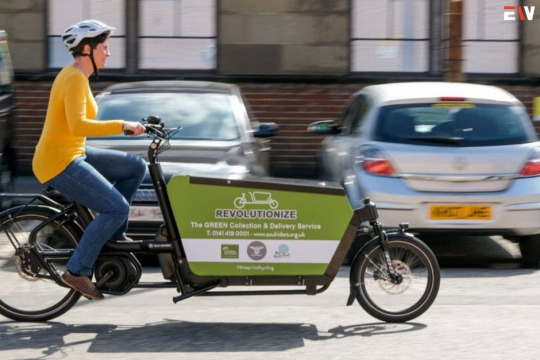
Eco-Friendly Transportation: Cargo bikes produce no emissions, making them an environmentally friendly mode of transportation.
Reduced Traffic Congestion: By replacing cars on short trips, cargo bikes contribute to reduced traffic congestion in urban areas.
Improved Health: Riding a cargo bike is an excellent form of exercise, benefiting both physical and mental health.
Cost Savings: Owning a cargo bike can lead to substantial savings on fuel, maintenance, and parking costs.
Community Building: Cargo bikes are a great conversation starter and help build a sense of community among users.
Choosing the Right Cargo Bike
Selecting the right cargo bike is essential to ensure it meets your needs and preferences. Consider the following factors:
Cargo Capacity: Determine how much cargo space you need, as different cargo bikes offer varying capacities.
Electric or Manual: Decide if you want an electric cargo bike for assistance on longer or hilly rides.
Storage and Parking: Consider where and how you’ll store your cargo bike when it’s not in use.
Accessories: Explore available accessories like rain covers, child seats, and cargo bags to enhance your cargo bike’s functionality.
Test Ride: Before making a purchase, take the cargo bike for a test ride to ensure it’s comfortable and suits your riding style.
The Growing Trend of Cargo Bikes

Sustainable Living: As environmental consciousness grows, more people are opting for eco-friendly transportation options like cargo bikes.
Urban Planning: Cities are becoming more bike-friendly, with dedicated bike lanes and infrastructure supporting the use of cargo bikes.
COVID-19 Impact: The pandemic has accelerated the adoption of cargo bikes as people seek alternative transportation methods.
Family-Centric Lifestyles: Cargo bikes cater to families looking for active, outdoor experiences together.
The Future of Bikes with Front Cargo
The future of cargo bikes looks promising, with several exciting developments on the horizon:
Innovative Designs: Expect to see more innovative cargo bike designs, making them even more user-friendly and efficient.
Sustainability: Cargo bike manufacturers are increasingly prioritizing sustainability, using eco-friendly materials and manufacturing processes.
Sharing Services: Cargo bike-sharing programs may become more common, making them accessible to a broader range of users.
Urban Integration: Cargo bikes will continue to integrate into urban transportation networks, helping to reduce congestion and pollution.
Summing Up
Bikes with front cargo are not just a means of transportation; they represent a shift in how we approach urban mobility, family adventures, and sustainable living. These versatile machines provide a green and efficient alternative to cars, with numerous practical applications, from grocery shopping to family outings. As the world embraces eco-friendliness and healthier living, cargo bikes are well-positioned to lead the way, promising a brighter, more sustainable future for urban transport and beyond.
Curious to learn more? Explore our articles on Enterprise Wired
#CargoBikes#SustainableLiving#UrbanMobility#GreenTransportation#FutureOfTransportation#CyclingInnovation#CargoBikeRevolution#EcoFriendlyRide
0 notes